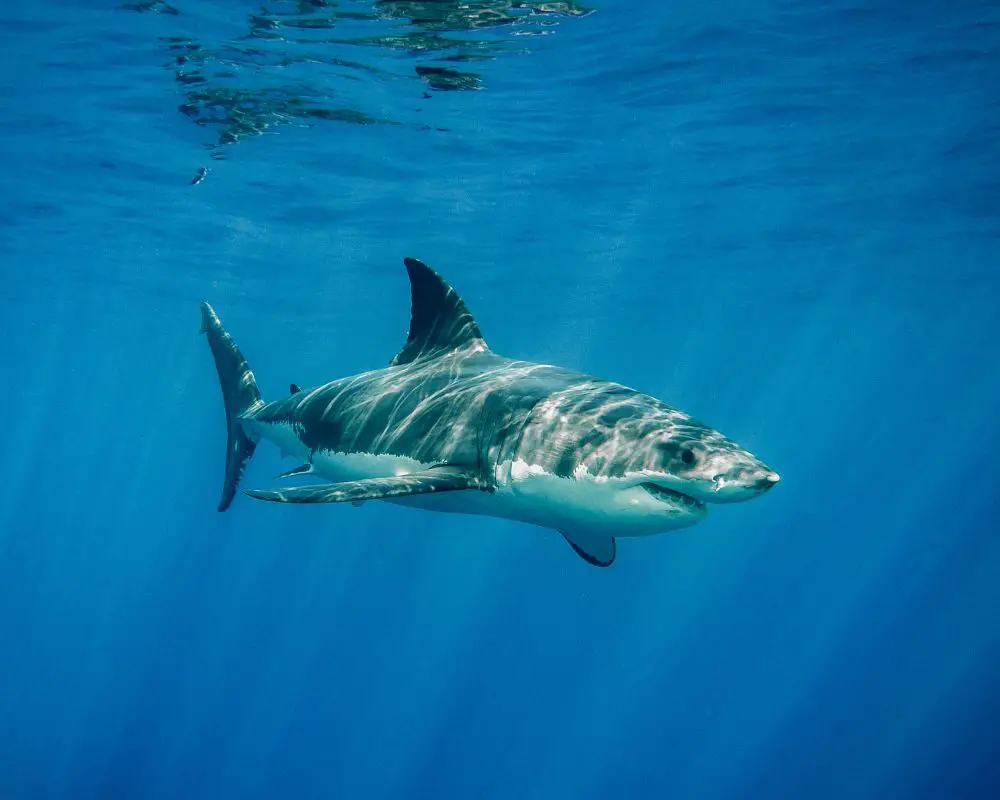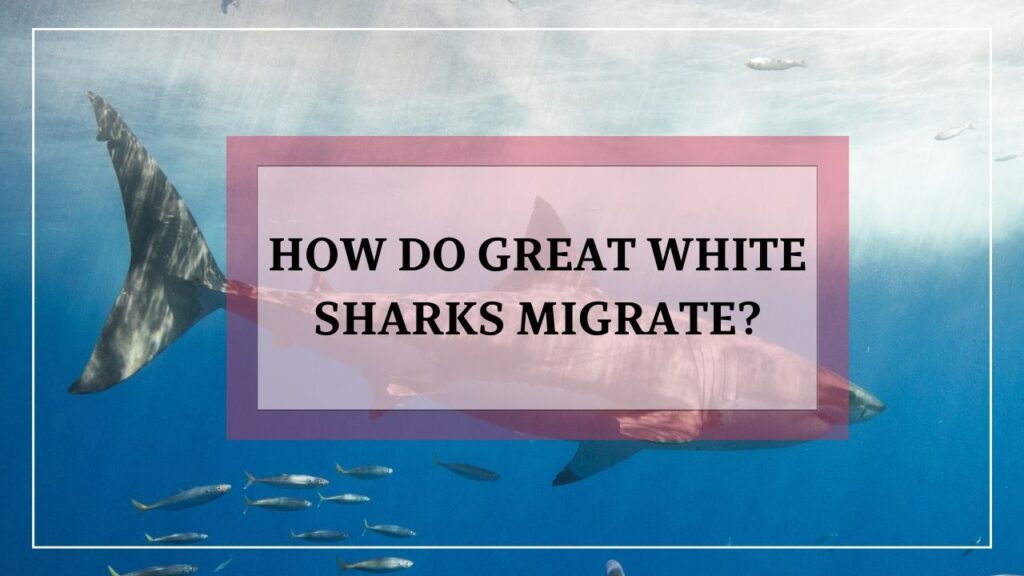Each year, great white sharks embark on incredible journeys that take them across thousands of miles of open ocean. From the shores of South Africa to the beaches of California, these apex predators navigate a world without borders, driven by a range of factors that scientists are only just beginning to understand.
In this blog post, we’ll take a closer look at the world of great white shark migration, exploring the routes they take, the factors that drive their movements, and the incredible adaptations that allow them to travel such vast distances. Whether you’re a seasoned marine life enthusiast or simply curious about the wonders of the underwater world, this post will provide a fascinating glimpse into one of nature’s most awe-inspiring phenomena. So come with us on a journey to discover the incredible world of great white shark migration!
Great white sharks are known for their impressive long-distance migrations, with some individuals traveling thousands of miles each year. Scientists are still studying the exact mechanisms behind great white shark migration, but they believe that the sharks use a combination of environmental cues, such as changes in water temperature and magnetic fields, to navigate their way across vast distances. Great white sharks are also known to follow specific migratory patterns that coincide with the movement of their prey, such as seals and other marine mammals.
Why Do Great White Sharks Migrate?

Great white sharks are among the most prolific migrators in the animal kingdom, traveling vast distances across the ocean each year. But what drives these movements, and why do great white sharks migrate?
Factors That Drive Great White Shark Migration
The migration patterns of great white sharks are influenced by a range of factors, including food availability, water temperature, and breeding cycles. In general, great white sharks tend to follow the movements of their prey, which include a variety of marine animals such as seals, sea lions, and other fish.
Water temperature also plays a key role in great white shark migration. These predators prefer cooler waters and are known to follow temperature gradients in search of optimal conditions. For example, in South Africa, great white sharks tend to move northwards during the summer months as the water temperatures become too warm for their liking.
The Importance Of Mating And Reproduction In Migration Patterns
Another key factor driving great white shark migration is mating and reproduction. Female great white sharks are known to migrate to specific regions to give birth to their young, while males follow these movements in search of potential mates.
Interestingly, different populations of great white sharks exhibit different mating and breeding behaviors. For example, in South Africa, great white sharks tend to mate during the winter months, while in California, mating tends to occur during the summer.
Examples Of How Great White Shark Migration Differs Between Populations
It’s worth noting that not all great white shark populations exhibit the same migration patterns. For example, while great white sharks in South Africa tend to migrate northwards during the summer months, those in California tend to move southwards during the same season.
Similarly, great white sharks in Australia have been observed to undertake long-distance migrations of up to 12,000 miles, while those in South Africa tend to remain closer to the coast.
Where Do Great White Sharks Migrate?
Great white sharks are found in all the world’s oceans, from the coastlines of California to the waters off South Africa, Australia, and beyond. But where exactly do great white sharks migrate to, and what are the key regions for these journeys?
Key Regions For Great White Shark Migration
Great white sharks undertake migrations to a range of regions around the world, with some of the most important areas including:
California
Off the coast of California, great white sharks are known to migrate to areas such as the Farallon Islands and the waters surrounding Guadalupe Island. These regions are home to large populations of seals and sea lions, which are key food sources for these predators.
South Africa
South Africa is another important region for great white shark migration, with the waters around Seal Island and Mossel Bay being particularly popular destinations. These areas are home to large populations of Cape fur seals, which are key prey items for great white sharks.
Australia
In Australia, great white sharks are known to migrate to a range of areas, including the waters off South Australia, Western Australia, and the eastern coast of the country. These migrations are often tied to the breeding and feeding behaviors of the sharks.
Other Regions
Great white sharks also undertake migrations to a range of other regions, including the waters around New Zealand, the Mediterranean Sea, and the coastlines of Japan and South America.
Migration Routes And Timing
The migration routes taken by great white sharks vary depending on the population and the factors driving the movements. For example, great white sharks in South Africa tend to move northwards during the summer months, while those in California tend to move southwards during the same season.
In general, great white sharks tend to migrate along coastlines and follow the movements of their prey. They may also follow temperature gradients in search of optimal conditions for feeding and breeding.
How Do Great White Sharks Migrate?
The migration of great white sharks is a remarkable phenomenon, involving long journeys across vast stretches of ocean. But how exactly do these predators undertake these migrations, and what adaptations allow them to do so?
Adaptations For Long-Distance Swimming
One key adaptation that allows great white sharks to migrate over long distances is their efficient swimming style. Great whites have a unique body shape that is designed for speed and maneuverability in the water, with a streamlined profile and powerful tail fin.
To conserve energy during long swims, great white sharks also use a technique known as “cruising.” This involves swimming at a constant speed without any bursts of acceleration or deceleration, which helps to reduce energy expenditure and conserve muscle glycogen stores.
Navigational Abilities
Great white sharks are also known for their impressive navigational abilities, which allow them to travel huge distances across the open ocean. While the exact mechanisms behind shark navigation are still being studied, it’s thought that they use a range of sensory cues to orient themselves.
For example, great white sharks have an acute sense of smell that allows them to detect even tiny traces of chemicals in the water. They also have a specialized sensory organ called the ampullae of Lorenzini, which allows them to sense electromagnetic fields in the ocean.
By combining these sensory inputs with visual cues such as the position of the sun and the stars, great white sharks are able to navigate with remarkable accuracy across vast stretches of ocean.
Environmental Factors
Finally, the migration of great white sharks is influenced by a range of environmental factors, including ocean temperature, prey availability, and seasonal patterns. For example, some great white shark populations migrate to warmer waters during the winter months to avoid cold temperatures, while others may move in response to changes in prey distribution.
When Do Great White Sharks Migrate?
The timing of great white shark migrations can vary depending on a range of environmental factors, as well as the specific population of sharks in question. However, there are some general patterns that have been observed in different regions around the world.
North Pacific
In the North Pacific, great white sharks are known to migrate to warmer waters during the winter months, typically between November and May. During this time, they can be found in areas such as Hawaii, California, and Baja California, where the water temperatures are more favorable for the sharks.
South Africa
In South Africa, great white sharks also tend to migrate during the winter months, typically between May and September. During this time, they can be found in areas such as False Bay and Gansbaai, where they feed on seals and other prey that are abundant in the area.
Australia
In Australia, the timing of great white shark migrations can vary depending on the specific population and location. However, in general, they tend to migrate to cooler waters during the summer months, typically between December and March. During this time, they can be found in areas such as South Australia and Western Australia.
Other Regions
In other regions around the world, the timing of great white shark migrations can vary depending on a range of factors, including ocean temperatures, prey availability, and seasonal patterns. In some cases, sharks may undertake shorter migrations or move within a more limited range throughout the year
FAQs
How Far Can Great White Sharks Migrate?
Great white sharks are capable of long-distance migrations and can travel thousands of miles in search of prey, warmer water temperatures, or breeding grounds. The farthest recorded great white shark migration was a female shark that traveled from South Africa to Australia and back, covering a distance of over 12,000 miles.
Why Do White Sharks Migrate South?
Great white sharks migrate south during the winter months to seek warmer water temperatures that are more suitable for their biology. The southward migration allows them to escape the colder waters of their summer feeding grounds and can also provide access to new prey species that are more abundant in the south.
Do Great White Sharks Migrate Alone?
Great white sharks are typically solitary animals, and there is evidence to suggest that they migrate alone rather than in groups or schools. However, researchers have observed occasional aggregations of great white sharks in areas with abundant prey, suggesting that they may come together in certain circumstances. Overall, however, great white sharks are generally considered to be solitary predators.

Hi, I’m Ali Tarek, the founder of Animalsman. I’ve always been passionate about pets, especially dogs and cats, and I created this website to share practical tips, easy recipes, and helpful care advice for fellow pet lovers. My goal is to make pet care simple, enjoyable, and accessible for everyone. When I’m not writing or curating content, you’ll usually find me spending time with my furry friends or learning new ways to keep them happy and healthy.



